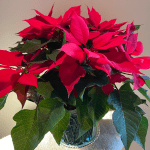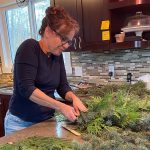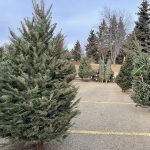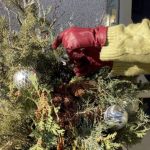I love Poinsettias, they signal Christmastime to me! So as you’re getting ready to bring poinsettias into your home, here are a few tips on choosing the right poinsettia!
With all the choices out there, how does one pick a healthy Poinsettia that will last the whole season?
I use 5 inspection points to assess whether a Poinsettia is healthy, and, to do that, I’ve created an acronym with the word ‘POINT’ to make sure I don’t miss anything. Poinsettias are called ‘Points’ for short in the horticulture industry, making this a quick and easy way to remember how to choose a healthy poinsettia.
Here’s a quick look at my 5 POINT inspection:
P = Photosynthesis – think ‘leaves’
O = Does the Poinsettia have Outstanding Flowers?
I = IS the Poinsettia well hydrated?
N = Does the Poinsettia have a Nice Shape?
T = Is the Poinsettia Tiny Bug-Free?

Want the inside scoop on more gardening tips? Get early access to all my blogs and exclusive content by signing up for my newsletter!
5 Poinsettia Inspection Elements Using the Acronym P-O-I-N-T
1. P = Photosynthesis – think ‘Leaves’
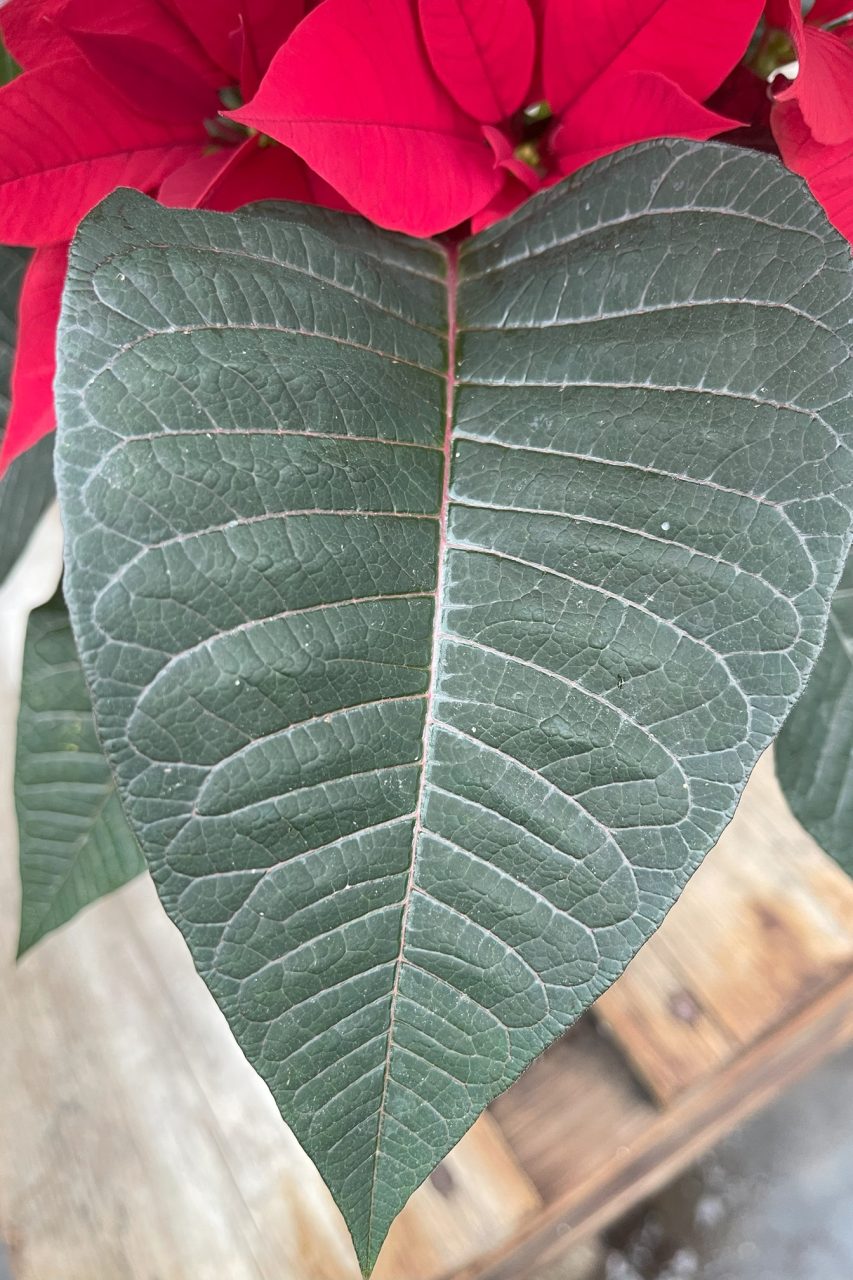
🍃 Leaves are the first indicator I inspect whenever assessing any plant.
Leaves can give a lot of information about plant health, just as human faces can reveal how people are feeling.
Leaves are the center of photosynthesis, and healthy green leaves are one of the barometers of plant health.
I look for rich, dark green leaves.
Leaves with burned edges or ones that are pale, yellowed, curled, dried up, spotted, or limp indicate some level of past or current metabolic stress.
Torn or leaves with holes are signs of some kind of physical trauma.
2. O = Does the Poinsettia have Outstanding Flowers?
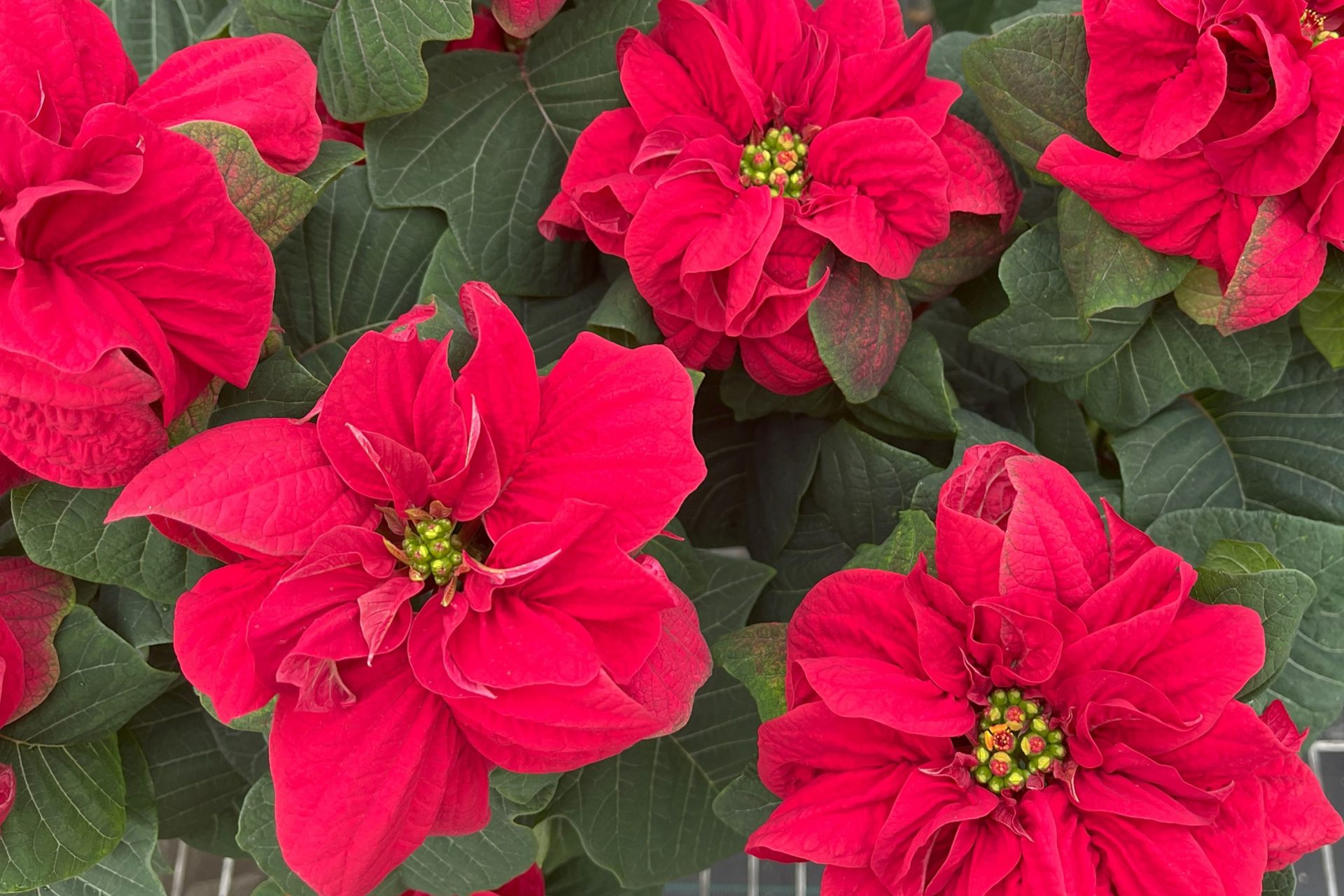
Poinsettia flower quality is another indicator of plant health.
Poinsettia flowers come in a wide range of colours. Red, and variations of red are the most popular, but they also come in white, shades of pink, coral, or purple, and they are available as ‘marble’, too.
Marbled Poinsettias have patterned bracts, usually of white and pink.
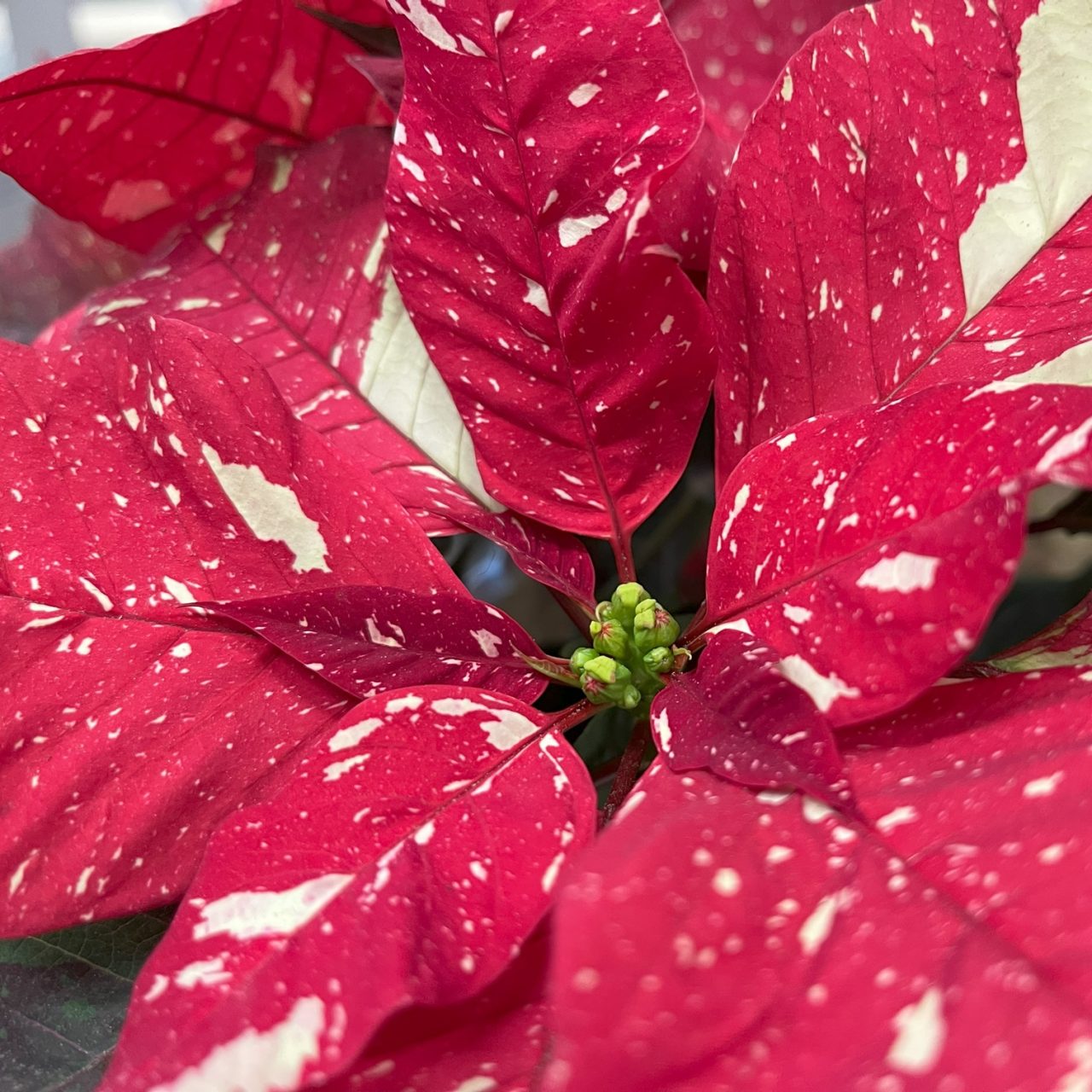

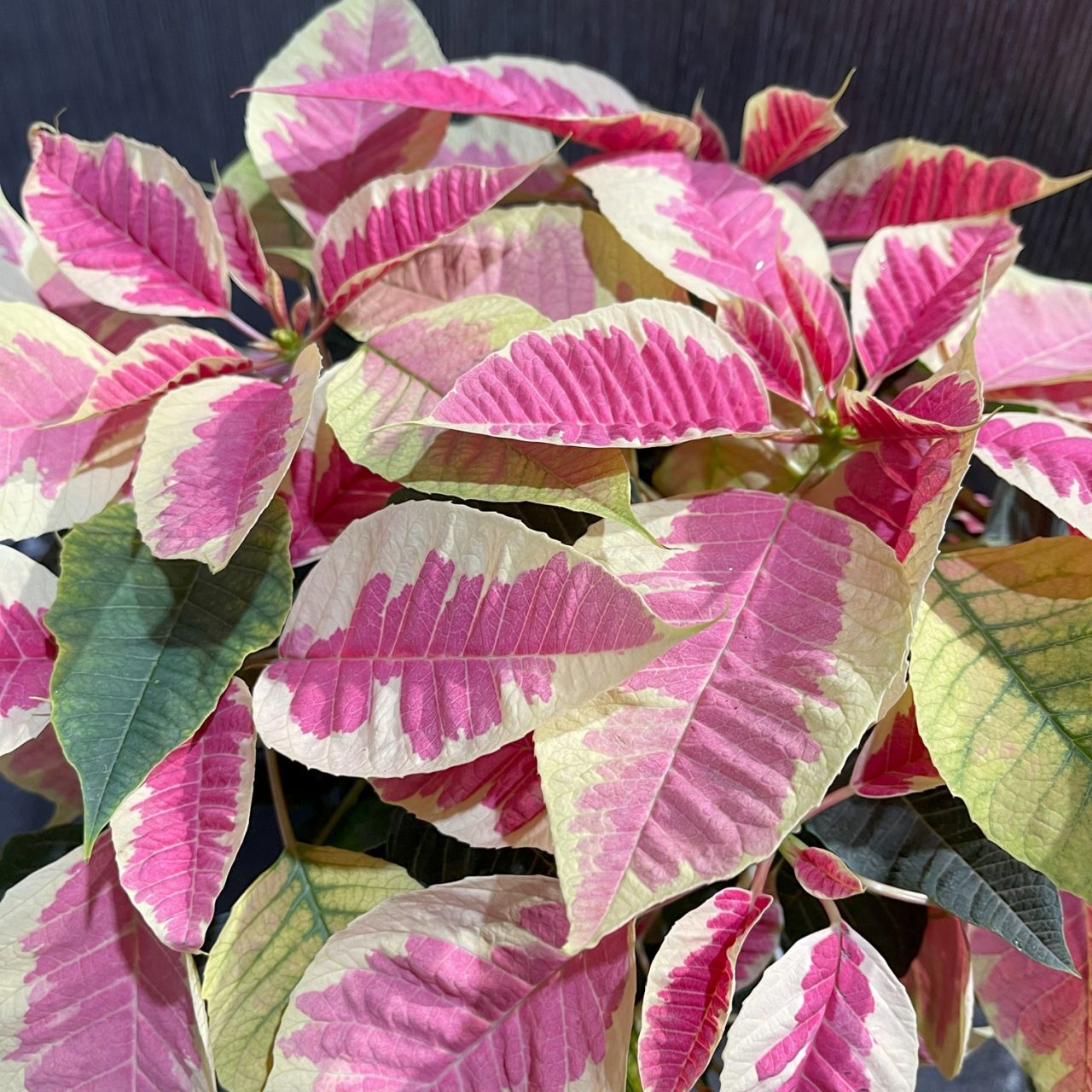

The coloured part of a Poinsettia really isn’t the flower; they are modified leaves that turn colour, called bracts, which is typical of the Euphorbia family that Poinsettias are a member of.
These leaves turn colour in response to shorter days as the flower buds develop to attract pollinators to the true flowers at the center of the bract inflorescence, which are tiny and yellow.
I check that the poinsettia bracts are unblemished, bright & colourful, without spots, curling, cracking, tearing, or dried black sap.
3. I = Is the Poinsettia Properly Hydrated?

💦 The letter ‘I’ asks if the Poinsettia is hydrated.
I like to know that a Poinsettia has been well cared for and watered correctly, and the weight of the pot gives me clues, so I pick up the pots to see how heavy they are.
I prefer to pick a Poinsettia that’s not too light, nor too heavy.
If it’s very light, I double check that the leaves aren’t showing signs of water stress, like drooping leaves.
Heavy, overwatered poinsettias will look wilted, too but this a sign of root rot settling in.
I’d pick out a dry poinsettia before I’d buy a dripping wet one, but medium hydration is best.
4. N = Does the Poinsettia have a Nice Shape?
The fourth characteristic I examine is the overall shape of the potted Poinsettia.
Poinsettias with a tight growth habit with its inflorescences drawn together in a tidy, round shape are my favourite and the easiest to decorate with.
However, triangular shaped flowers work well if you need to tuck it into corner spaces.

5. T = Is the Poinsettia Tiny Bug Free?
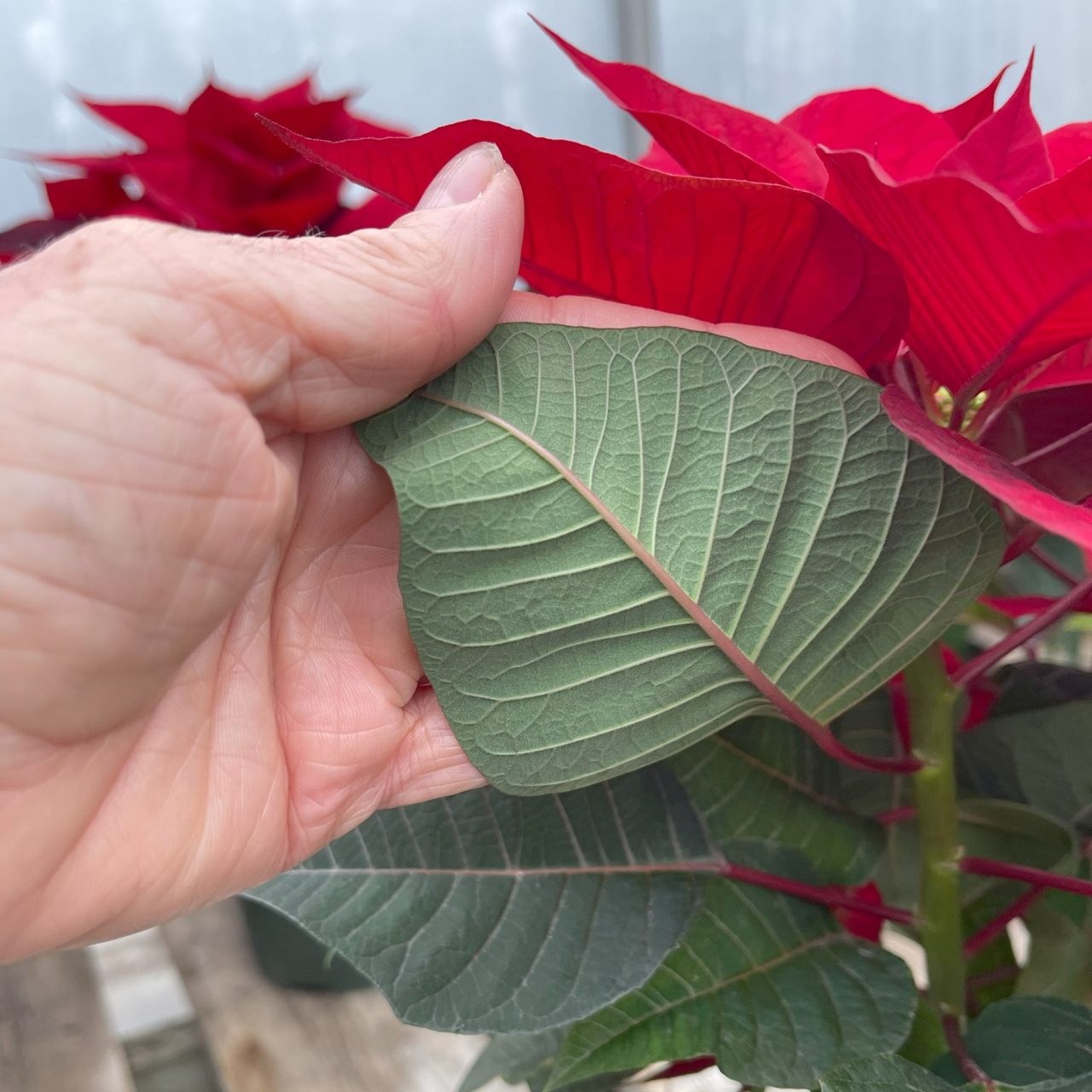
🪰 My final check is for bugs.
White flies are particularly fond of Poinsettias and that’s the last thing I’d like to introduce into my home.
White flies like to drill their mouth parts into the plant’s vascular system and extract the sweet sap.
I gently turn over the leaves to look for white flies, which is their favourite hiding spot, they have white wings and they lay light green-coloured eggs.
Another cherished hideaway for white flies is where the leaf petiole attaches to the stem, so give a quick look there, too.
While handling the Poinsettia, watch to see if any white flies shoot out of the plant to find a safer haven. They move quickly, so you may just see them out of the corner of your eye.
Have a Lovely Christmas Season!
I hope that this quick walk-through helps you choose the best Poinsettia for your holiday celebrations!
Related Christmas Blogs
- How to Get Your Poinsettia to Rebloom and Stay Beautiful Year-Round
- How to Care for Your Poinsettia in Three Simple Steps
- How to Select, Use, and Care for Live Christmas Greenery
- How to Choose and Care for a Real Christmas Tree
- How to Make an Evergreen Garland
- How to Make a Christmas Wreath
©Sharon Wallish Murphy ©Gardening with Sharon


